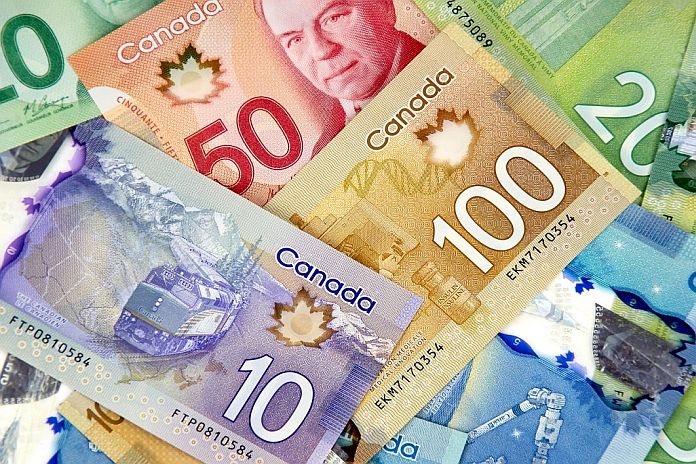By BDC
MONTREAL, Canada – The Canadian dollar has been in free fall recently, dropping to around US$0.73. The last time the Canadian dollar was this weak was two and a half years ago at the start of the pandemic. A low Canadian dollar relative to the US dollar favours exports at the expense of imports, which could be good news in the current economic climate.
The exchange rate between the Canadian dollar and any floating foreign currency is determined by the forces of supply and demand. The foreign exchange market, like any other market, reflects expectations about future developments. And like other markets, such as the stock market, it’s highly volatile and notoriously difficult to predict.
However, certain indicators such as commodity prices, the difference between Canadian and US short-term interest rates and the level of stock market volatility can give us an idea of where the loonie’s value is headed in the weeks ahead.
Commodity prices
Resource industries account for about 10 percent of Canada’s economy, but about 40 percent of exports. The Canadian stock market is also heavily weighted with commodity producers. Therefore, fluctuations in global prices for commodities such as oil, metals and grain that trade in U.S. dollars explain some of the volatility in the Canada/US exchange rate.
Commodity prices have dropped in recent months against a backdrop of slowing economic growth. Central banks around the world are raising interest rates to combat surging inflation and this is heightening fears the slowdown could turn into global recession, hurting demand for commodities. The shock to commodity prices caused by the invasion of Ukraine and sanctions imposed on Russia, both major resource exporters, is also fading.
Energy prices (including oil) are down almost 30 percent from their mid-June highs as fears of weakening demand intensify. Lumber prices, meanwhile, have fallen by half over the past six months as rising interest rates take a toll on the housing and construction markets.
While supply chain issues remain, commodity price corrections are expected to continue in the coming months and keep the Canadian dollar weak against its US counterpart.
The interest rate differential
The short-term interest rate differential between Canada and the US was essentially eliminated by central bank actions during the early stages of the pandemic. To support the economy, the US Federal Reserve and the Bank of Canada both lowered their policy interest rates to the floor and used massive asset purchases to further support low-interest rates.
Today, it’s a very different story. Although rates on both sides of the border are moving higher in tandem, the expectations for where they will peak are quite different. The latest Canadian inflation data shows encouraging signs that the worst is likely behind us; this is not the case in the US where core inflation measures picked up in August.
Therefore, the Fed will likely have to raise its policy rate near 5 percent in 2023 while we expect the Bank of Canada’s policy rate to peak at around 4 percent.
An increasing spread between short-term rates between the US and Canada favours the US dollar as investors move money to take advantage of the higher rates south of the border. This is another factor that will weigh on the Canadian currency in the coming months.
Uncertainty, risk and the stock market
Market volatility is an indicator of risk appetite, global uncertainty and inflation expectations. The VIX, the index representing stock market volatility – commonly referred to as the fear index – has been high for several months.
The war in Ukraine, the energy crisis in Europe, harsh COVID lockdowns in China and tensions over Taiwan are all contributing to rising uncertainty. Fears of a global recession are also fuelling volatility expectations in the stock market.
In this context, the demand for US dollar as a safe haven currency is increasing. The greenback has appreciated strongly not only against the Canadian dollar, but also against every major currency in the world in recent weeks.
In fact, relative to other currencies, the Canadian dollar has actually done quite well. It’s down 8 percent versus the US dollar since the beginning of the year, much less than the 15 percent decline in the Euro and the 20 percent drop in both the Japanese Yen and the British Pound.
So where is the Canadian dollar heading?
The loonie continues to lose ground as many commodities, including oil, drop in price. Fears of a global recession are gaining momentum and the Fed will likely have to raise rates higher than the Bank of Canada to tame inflation.
All these forces will likely continue to weigh on the Canadian dollar in coming months and favour the US currency. The exchange rate should continue to hover in the US$0.70-0.75 range for some time. A weaker loonie generally favours Canadian exports at the expense of imports. This should temper the economic slowdown in Canada somewhat, but the gains will likely be limited because the US economy is also gearing down.





